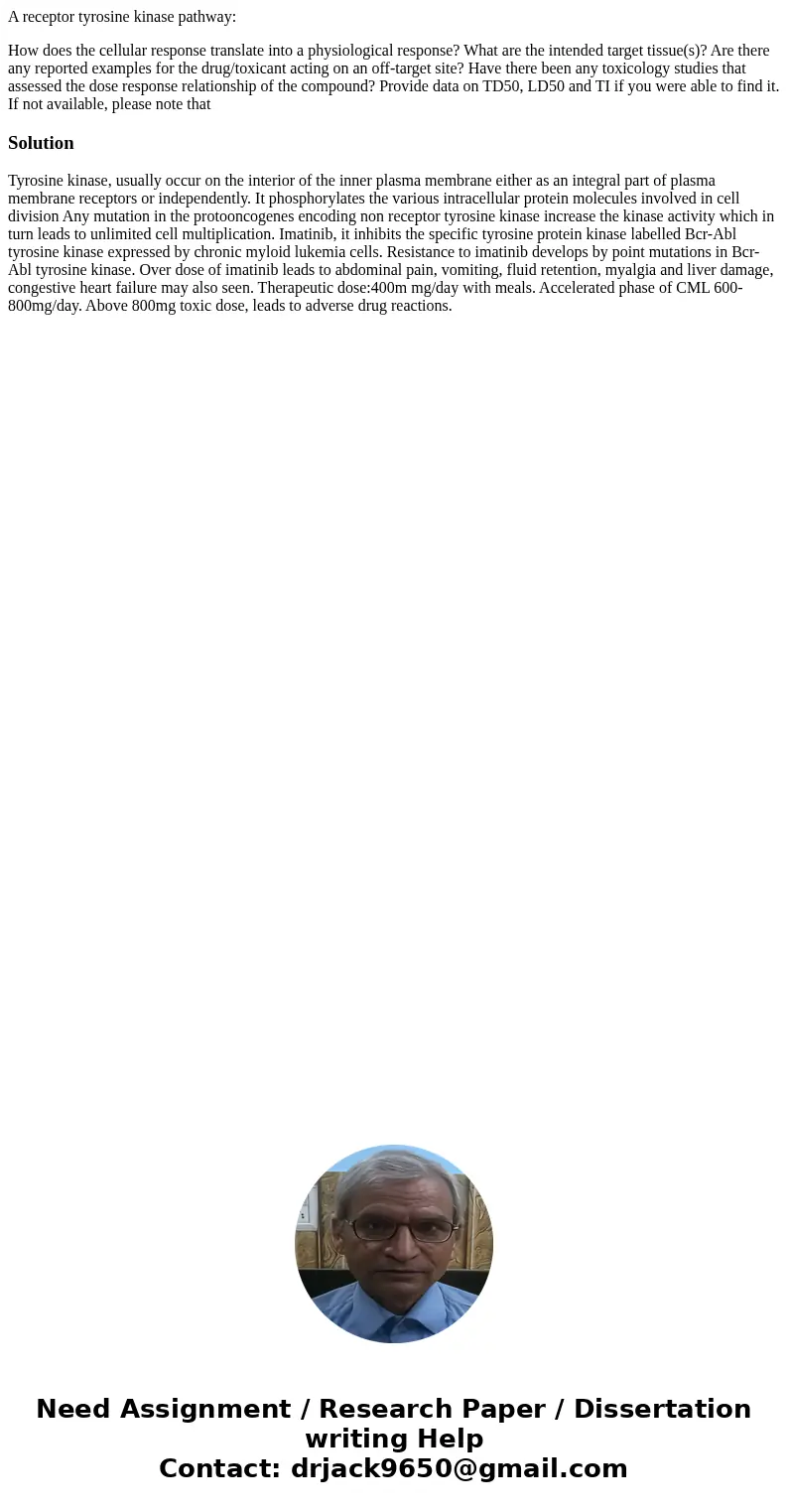A receptor tyrosine kinase pathway How does the cellular res
A receptor tyrosine kinase pathway:
How does the cellular response translate into a physiological response? What are the intended target tissue(s)? Are there any reported examples for the drug/toxicant acting on an off-target site? Have there been any toxicology studies that assessed the dose response relationship of the compound? Provide data on TD50, LD50 and TI if you were able to find it. If not available, please note that
Solution
Tyrosine kinase, usually occur on the interior of the inner plasma membrane either as an integral part of plasma membrane receptors or independently. It phosphorylates the various intracellular protein molecules involved in cell division Any mutation in the protooncogenes encoding non receptor tyrosine kinase increase the kinase activity which in turn leads to unlimited cell multiplication. Imatinib, it inhibits the specific tyrosine protein kinase labelled Bcr-Abl tyrosine kinase expressed by chronic myloid lukemia cells. Resistance to imatinib develops by point mutations in Bcr-Abl tyrosine kinase. Over dose of imatinib leads to abdominal pain, vomiting, fluid retention, myalgia and liver damage, congestive heart failure may also seen. Therapeutic dose:400m mg/day with meals. Accelerated phase of CML 600-800mg/day. Above 800mg toxic dose, leads to adverse drug reactions.
 Homework Sourse
Homework Sourse